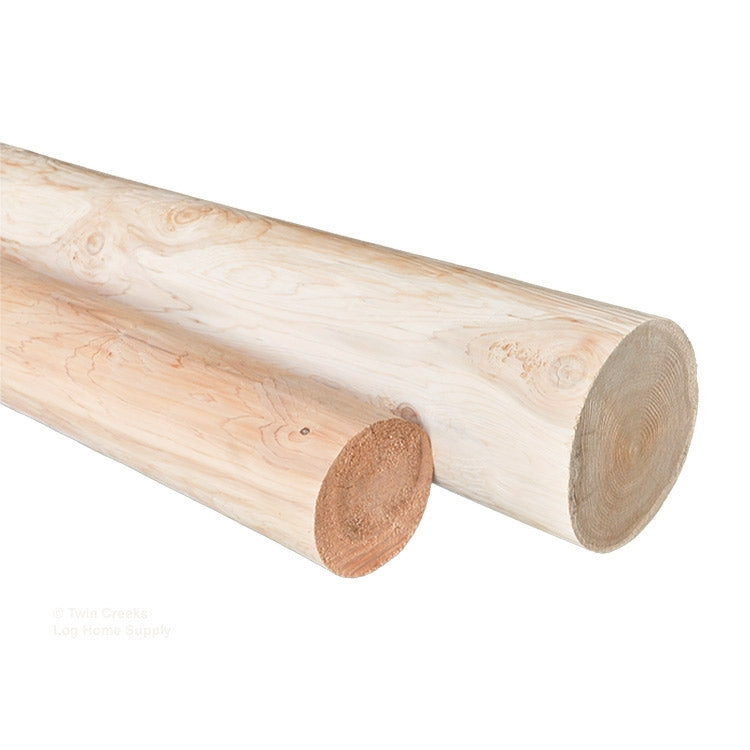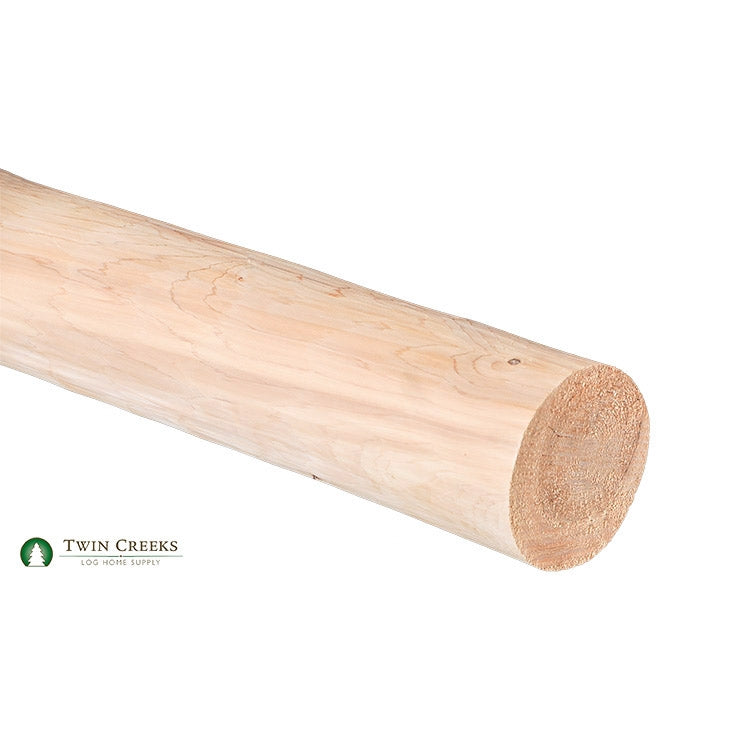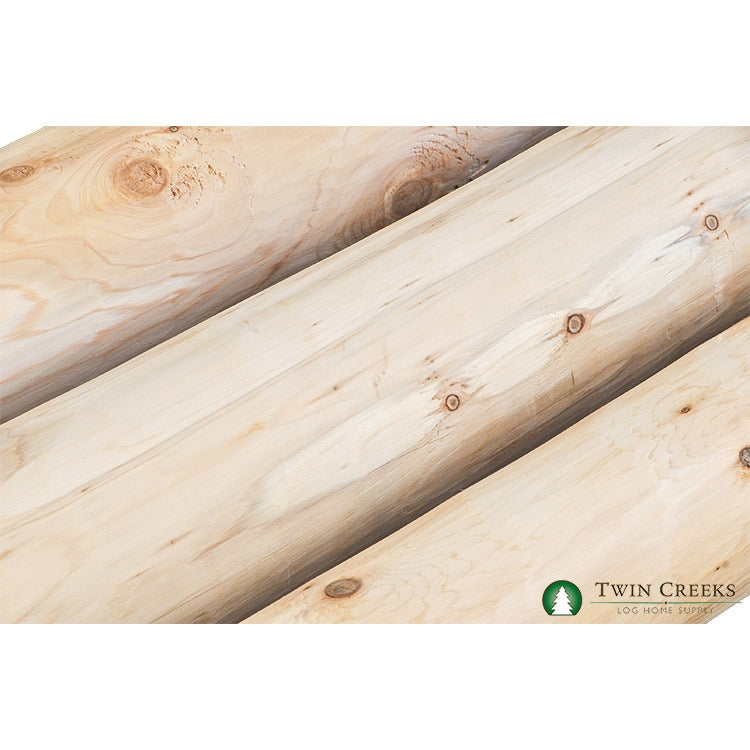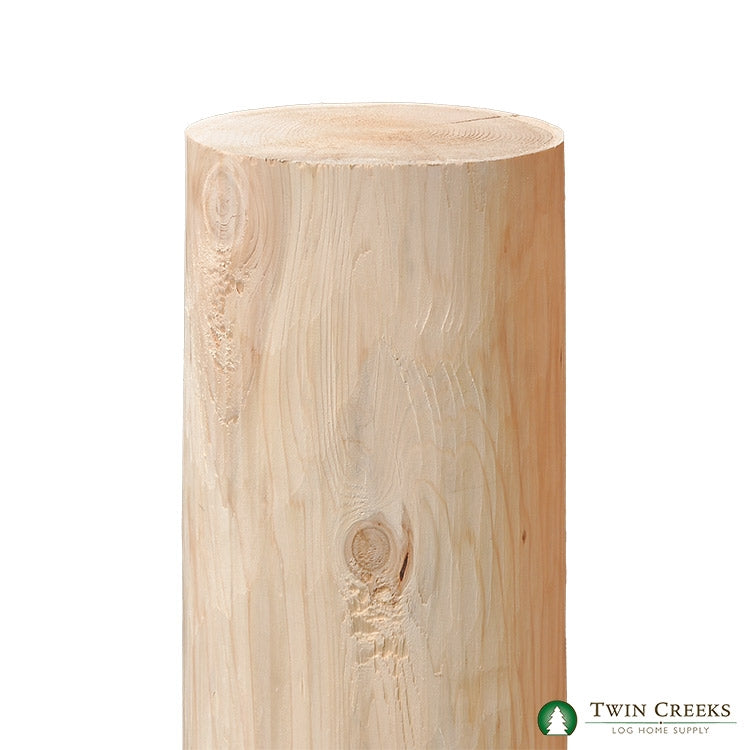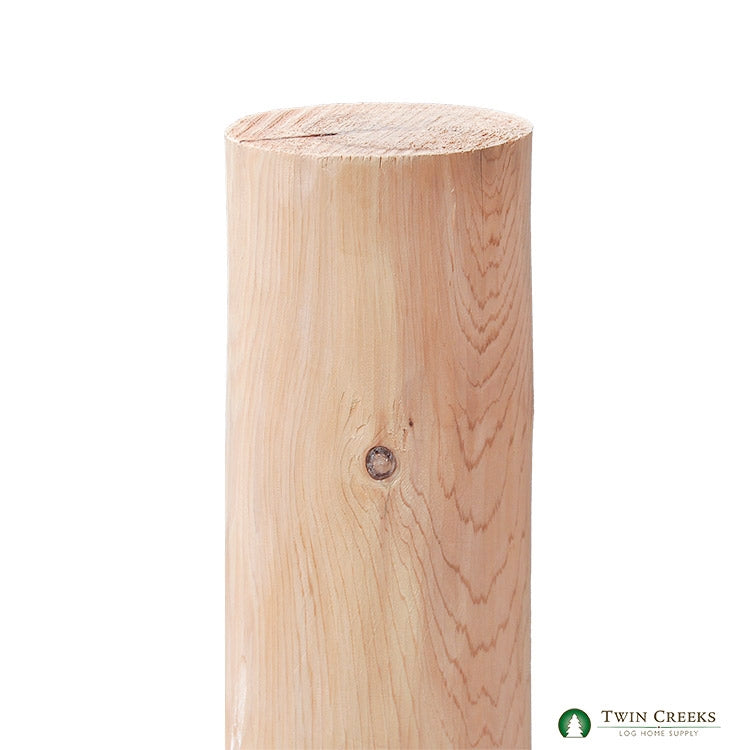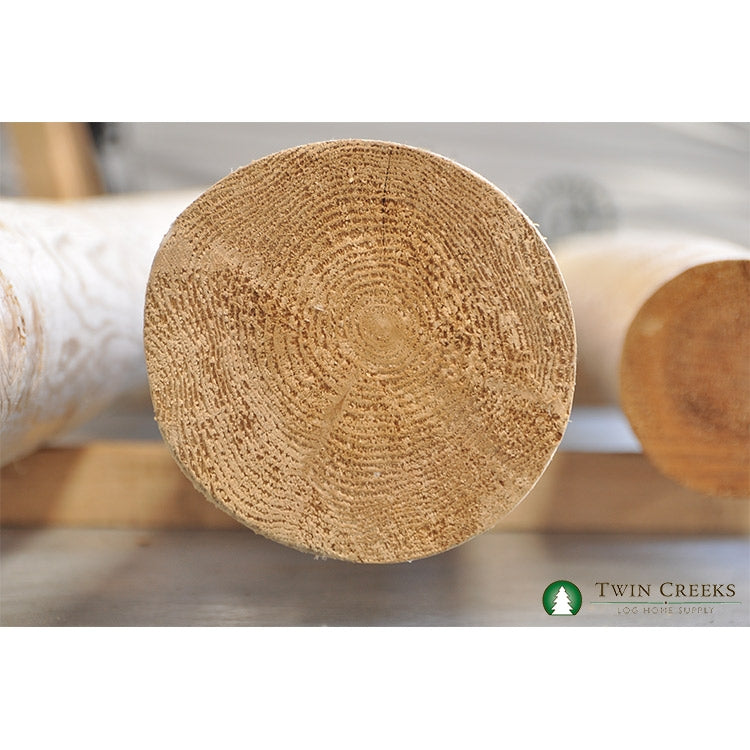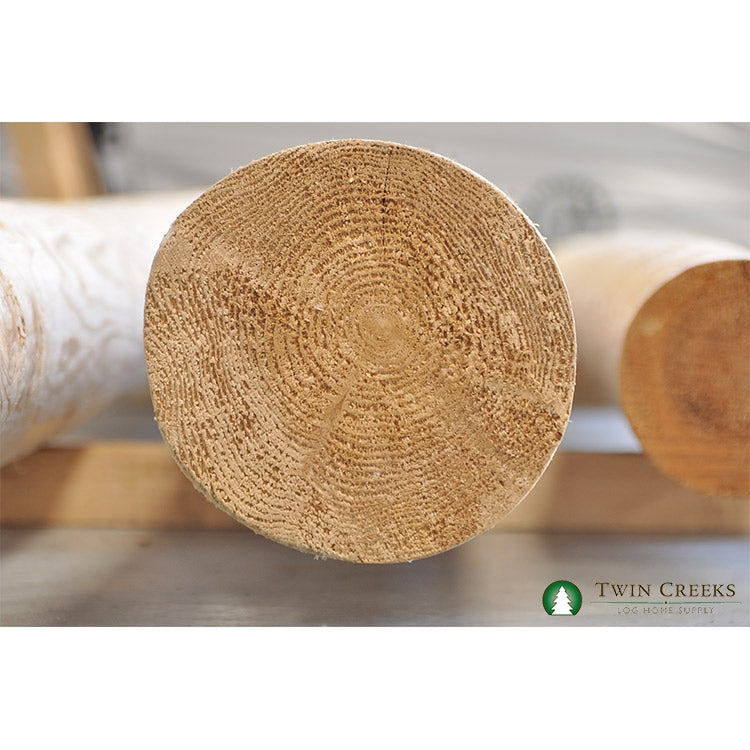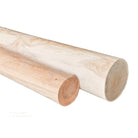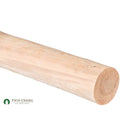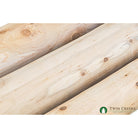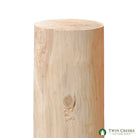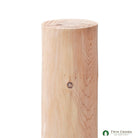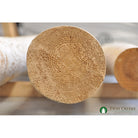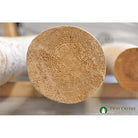Northern White Cedar Hand Peeled Posts
Details
Northern White Cedar Hand Peeled Posts Specifications:
• Typical Uses: Decorative and structural posts
• Available Lengths: 8' and 10' lengths
• Typical Lead Time: This product is hand peeled at the time it is ordered to prevent the grain from naturally graying. Typically available in 1-2 weeks.
• Drying Type: Air-Dried
• Profile: Round
• Texture: Hand Peeled.
• Typical Lead Time: 2-3 weeks, subject to availability.
• Recommended Fasteners: Stainless steel screws or nails. Heavy duty log screws and lag screws work especially well with post applications where high strength in torsion is needed..
• Typical Weight per board foot: 2 lbs./bf
• Shipping Options: Flat-bed tractor trailer, Roll Back, LTL Carrier. Shipping method is determined based on location and order size to minimize cost.
Northern White Cedar Hand Peeled Post Features & Benefits:
• Naturally Resistant to Decay, Moisture and Insects.
• Minimal Sapwood Content.
• Straight Grain Pattern and Tight Knot Structure.
• Distinct but Modest Aroma.
• Very Light When Dried and Very Durable Due to its Natural Slow Growth Process.
• Naturally Weathers to a Silvery Gray Color Unfinished.
• Accepts Oil and Water Based Stain Exceptionally Well.
How Can Northern White Cedar Be Used?
• Outdoor Applications: Decks & Railings, Balconies, Utility Poles, Outdoor Furniture, Fence Posts.
• Indoor Applications: Stair Railings/Hand Railings, Log Home Furniture, Interior Support Poles.
Preparing Northern White Cedar for Staining
Proper preparation of your northern white cedar lumber before staining, as well as the staining procedure itself, can ensure that your finished product exceeds expectations. Below are a few valuable tips for the proper preparation of the wood and application of wood staining products.
- Prepare the Hand Peeled Posts: Use a TSP (Tri Sodium Phosphate) and Bleach wash to open up the cellular structure of the wood so the stain will penetrate further into the grain. Please refer to the manufacturer of the stain that you choose for further cleaning and preparation information.
- Stain quality: There is a wide range of products and, of course, the best products can be the most expensive. Even a quality stain will not wear well if preparation is inadequate or sun exposure is excessive. Look for guarantees and for stain life expectancies as published by the manufacturer. Follow all manufacturers’ recommendations for product preparation and stain application.
- Stain application: Unlike paint, stain is designed to soak into the wood. Two healthy coats of stain back-brushed into the wood itself are much better than one heavy coat of stain that will sit on the surface. If you apply your stain like a thick coat of paint, the stain will ultimately chip, crack and peel.
- Color choice: The predominant enemy of stain is the UV rays of the sun. Lighter stain colors will fail faster than darker stain colors because UV rays penetrate further into the lighter colored product.
- Limit sun exposure: If you are still designing your home, you might want to position your home in relation to the sun in order to minimize sun exposure. It is always good idea to have an 18-24 inch overhanging soffit on your roof to keep your log siding out of the sun as much as possible.
What is the Difference between Northern White Cedar & Western Red Cedar?
Northern White Cedar (Thuja Occidentalis) differs from Western Red Cedar (Thuja Plicata) in leaf color (dull, yellowish green on both surfaces), seed cones scale formation, tree size, and geographic regions of growth.
Northern White Cedar’s primary geographic growth area is lower Canada, and the perimeters of colder, swampy regions of the Great Lakes. Western Red Cedar has a reddish appearance while Northern White Cedar is yellowy-beige in color. Western Red Cedar and Northern White Cedar are both aromatic. The face grain is very similar between the two, so looking at the end grains is the best way to identify the species of wood.
Although the decay resistance of the two trees is generally similar, there is a marked difference in the lumber itself. The core of the tree is the heartwood and the best decay resistant product you can buy is the heartwood section of the tree. White Cedar will normally have the heartwood of the tree in nearly 100% of your lumber pieces. Red Cedar may have the heartwood of the tree in about 10% of the lumber pieces. Why? Because Western Red Cedar trees are significantly larger in diameter than Northern White Cedar.
Northern White Cedar Care and Maintenance:
As with every unfinished exterior wood, applying a quality finish to all surfaces (including the ends) is recommended. An exterior finish protects the wood from moisture absorption and UV degradation, and helps prevent staining caused by mold and mildew. On occasion, the siding may have a mill glaze that is produced when the material is manufactured through the planer. When mill glaze occurs, it is recommended to remove it by pressure washing the wood or sanding prior to staining. Sanding is not recommended as a first option unless every piece is sanded. We offer a wide selection of Oil and Water Based exterior finishes that we can recommend based on the final finish, maintenance schedule and look that is desired. Most translucent exterior finishes will need to be re-coated or reapplied every 3 -5 years depending on the product and your home's UV exposure. You can find all of the exterior stain products that we carry at our Exterior Stains page.

